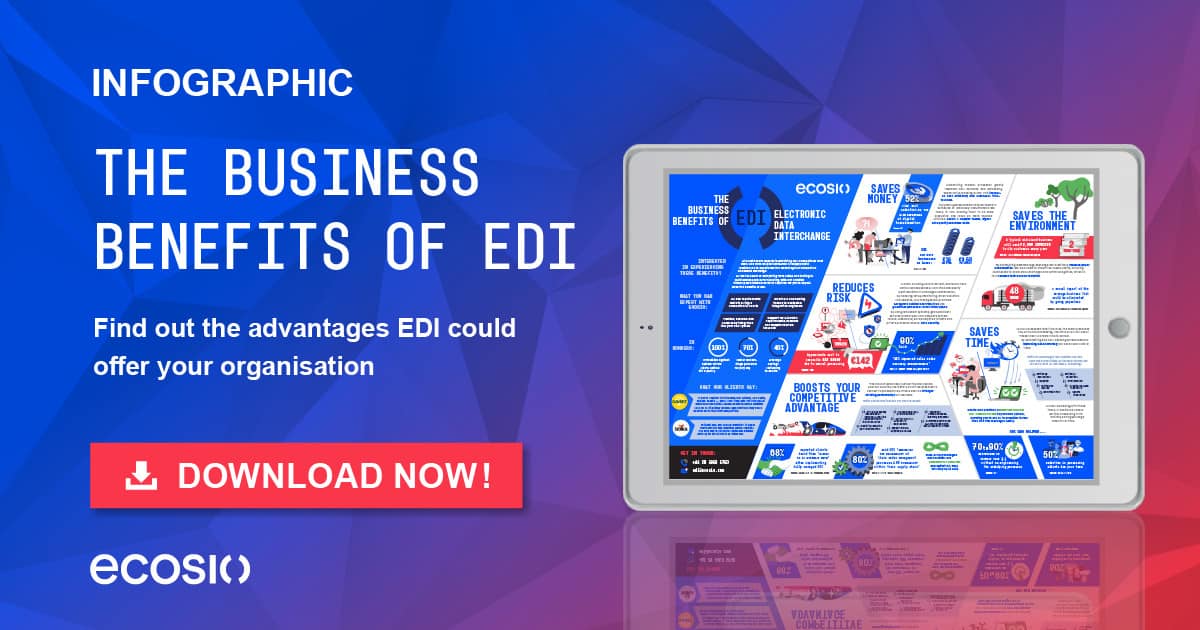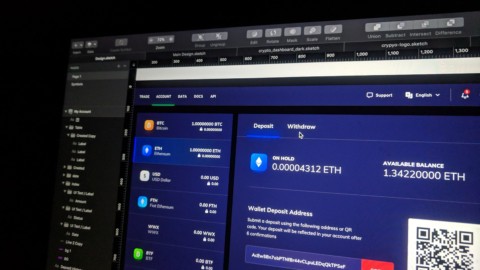Green initiatives are nothing new in modern supply chains. From attempting to minimise the distance various components travel before they reach the customer, to gradually introducing eco-friendly products and packaging, businesses today are trying hard to reduce their carbon footprint.
Although wanting to make a difference is certainly a large driver for many businesses, implementing positive changes often makes just as much sense from a financial standpoint. More and more customers are looking at businesses’ environmental credentials when making decisions. Plus, often the same actions that reduce a business’s carbon footprint will deliver real cost savings too.
Implementing or upgrading an electronic data interchange (EDI) solution is a perfect example of just such an action.
But let’s first take a step back to explain what electronic data interchange actually is.
What is EDI?
EDI refers to the method via which businesses exchange documents with one another automatically. The messages themselves are typically not readable by humans. Instead they are formatted according to specific computer-readable standards. For this reason, a typical EDI invoice looks very different to a PDF invoice that you might receive via email.
EDI standards were developed so that businesses could interchange documents efficiently between each other without human intervention and without errors, as the standards dictate exactly where each piece of data must go in the document. This in turn allows the recipient’s machine to extract the data automatically.
Importantly, EDI standards and the message protocols used to transmit them also mean that sending and receiving EDI messages requires less energy than via email… but we’ll come to that later…
For a more detailed overview of what EDI is, you may want to check out our video on this subject here.
How popular is EDI?
One estimate puts EDI usage in the supply chain sector somewhere between 59% and 85%. For example, nearly 70% of all sales in the manufacturing industry in the USA in 2021, for example, were carried out through EDI systems.
For more interesting EDI stats, why not check out our infographic on the business benefits of EDI?
How EDI directly reduces your carbon footprint
The most obvious direct effect of EDI is in paper consumption. Using EDI virtually obliterates paper consumption relating to common B2B messages such as orders, invoices, delivery notes, and so on.
If we just look at invoices, for example, a typical mid-sized business produces 18,000 invoices in a year. That equals two tonnes of paper!
But invoices are barely a drop in the ocean. Considering that the average UK employee prints 8,000 A4 pieces of paper a year, we’re looking at 80,000 pieces of paper for a company of 10 people. If one tree can produce 10,000 sheets of paper, we’re looking at eight trees lost in a year for all that paperwork.
Multiply that by all the companies in the UK, and their size, and we’re looking at a truly mind-blowing number.
The loss of trees not only means that less CO2 gets removed from the environment. Cutting trees and turning them into paper also adds CO2 due to the high carbon footprint of the papermaking process from beginning to end.
One kilo of paper produces about a kilo of CO2 during its production lifecycle.
How EDI indirectly impacts your carbon footprint
In addition to the direct impact that EDI has on paper consumption, there are significant indirect effects of using EDI as well…
Fewer emails = a smaller carbon footprint
Though it is often overlooked, emails do have a carbon footprint. The size of this footprint depends on several factors:
- How long the email is stored for. Emails stored for longer require more space on a hard drive somewhere, even if that hard drive is on the cloud. The more space is required, the more energy is needed.
- How large the email is. The larger the email, the more energy is used to send it.
- How many people are cc’ed in the email. Sending an email has a carbon footprint and so multiplying the number of people it is sent to multiplies the carbon footprint.
- If the email has attachments, and how many. Email attachments add to the email’s size. Generating the attachment also takes up energy depending on the software used.
This is nothing nebulous. It’s a matter of hard fact. A study conducted in 2019 discovered that Brits send 64 million unnecessary emails a day and that sending one less “Thank you” email a day would save 16,433 tonnes of carbon a year, or as much carbon as is produced by 81,152 flights to Madrid from the UK!
As Mike Berners-Lee, professor at the environment centre in Lancaster University, and brother of the man who invented the internet, said: “Whilst the carbon footprint of an email isn’t huge, it’s a great illustration of the broader principle that cutting the waste out of our lives is good for our wellbeing and good for the environment.“
EDI improves efficiency and reduces errors
Implementing EDI means companies need to send thousands of emails less, which greatly reduces energy use. Instead of email, EDI takes care of most of the communication between business partners.
In addition, EDI also improves efficiency and reduces errors – such as those resulting from manual data entry. Typically such errors result in a lot of runarounds, lost time, additional emails, and unnecessary use of machinery, which in turn increases a company’s carbon footprint.
How to get started with EDI
Want to start experiencing the benefits of EDI or keen to upgrade to a more efficient solution? At ecosio we’re experts when it comes to B2B integration. With our help you’ll not only be able to improve your carbon footprint and boost the sustainability of your business; you’ll also save time, save money and reduce risk.
Find out more about our unique EDI as a Service solution, or get in touch. We are always happy to help!













